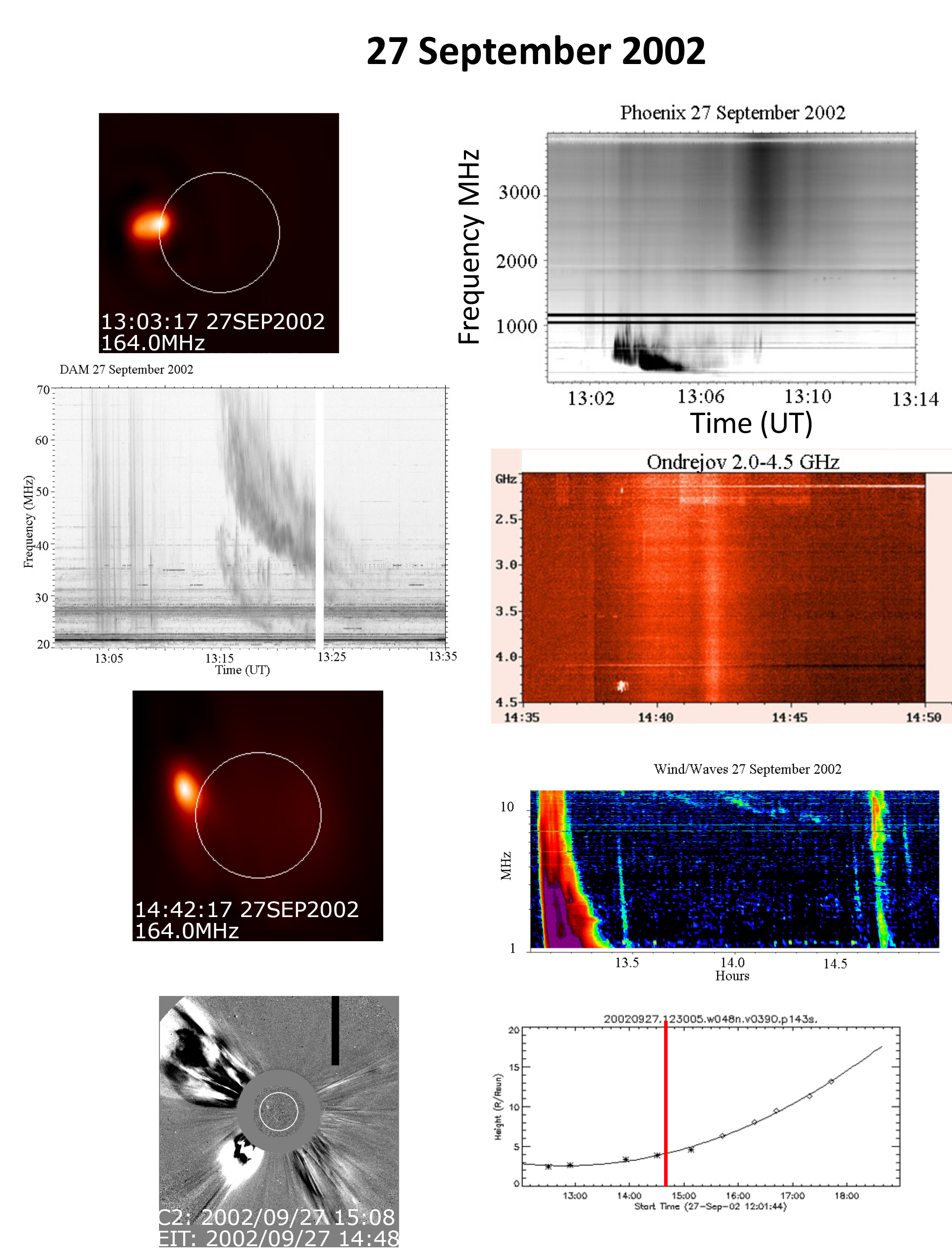September 27 2002 (SSC28, -49 -176) CMEN41

27 September Episode I 13:01-13:10 UT: Big microwave and metric radio burst >4 GHz-200 MHz (Phoenix); the lower frequency of this burst drifts with time (could be the signature of a moving type IV burst); Metric radio continuum (NRH 410 and 164 MHz) observed until 13:25 UT. 13:14-13:30 UT: Type II burst first observed at decameter wavelengths (DAM and Postdam) F-H, (F 45-25 MHz; split of the H component) and then at lower frequencies by WIND/Waves (13:35-14:30 UT). This event is associated with a M-X-ray GOES flare starting at ∼12:58 UT (maximum near 13:02 UT) and a CME (CMEN41 (no C2 image between 12:54 UT and 13:06 UT), PA 64 (deg), Width 64 (deg), V 591, 510, 505 km/s). As shown by the EIT and NRH data at 150 MHz, the onset of this event is located near the south edge of this CME. One may in fact distinguish, in the C2 images, two very close CMEs which erupt together: CMEN41 and, on its south edge, a distinct and narrow CME1. The X-ray and NRH sources are located below CME1.
Episode II 14:39-14:43 UT: Onset of a short microwave radio event (Ondrejov 4.5-2.5GHz), also detected at lower frequencies DAM, NRH at 150 MHz then WIND/Waves). The NRH source is located in the same region as the one discussed in Episode I. The WIND/Waves type II burst disappears soon before the onset of this event which is associated with a type II-like burst of very short duration. Here again, both CMEN41 and CME1 are observed conjointly.
This event shares the following characteristics:
- Episode I: A-B (type IV), Type II onset at 45 MHz then detected by WIND/Waves; one single CME number is given to two close CMEs.
- Episode II: A, type II (short time duration).